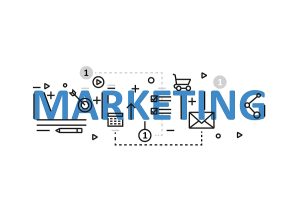Are your Google Ads not pulling in leads for your business? There can be many reasons why, but if you think you have good ads, ad copy, and the right budget, it might be the pages you’re linking these ads to. Called landing pages, these website pages will be the first (and often last) page someone clicking on an ad might see. If you’re not getting the conversions, it might be time for better landing pages. Learn the tools you have to rate your current ones, what makes a good landing page, and how to get started making them.
Looking at the Google Ad Quality Score
So, Google already has a rating tool that includes the landing page as part of the ad: the Quality Score. This score compares your ad to three major parts: the expected clickthrough rate or CTR, the keyword relevance, and the landing page experience. After comparing, it’ll give you a score from 1 to 10 and cite the quality of each part (from above average, to average, to below average). You can influence this score by writing good ad copy, picking the right keywords, and making sure the landing page is loading well and is relevant. It’s important to note that quality score doesn’t directly impact ads (amount shown, pricing, etc.) but instead is an indicator of how well Google thinks the ad will perform.
What Makes a Landing Page Good?
Google, both specifically for ad landing pages and generally for SEO, recommends several things that your website pages should contain. They overlap a lot with things web developers and marketers (of which we’re both) recommend, so let’s go down the list, from the most concrete to the most general:
- Loading Speed and Mobile Responsiveness: Google has made a push for better UX as a part of not only Google Ads but search ranking in general. This means faster loading pages and website pages that look good on mobile.
- Meta Title and Description: Metadata—the information Google Search and other sites pull from your website’s pages—should be customized for each page and tailored not just to Google Search but Google Ads.
- Relevant Keywords and Content: If the page you’re linking to with ads doesn’t contain related content to the ad copy and keywords, users are going to get confused. Learn more about both keywords and content to get started.
- Clear Calls to Action: Calls to action—ways of turning website visits into leads—include options to call now, fill out a form, buy a product, message the site, and more. Does your landing page have none of those?
Making Better Landing Pages for Higher Lead Generation
This then begs the question: should you build out bespoke landing pages for specific Google Ads ad groups and campaigns? While the short answer is “of course,” the long answer is that your time is not infinite, so you need to balance what such a landing page would get you vs. the sunk costs of time, money, and skills (the three resources you have) to make it. A good general rule of thumb is if the landing page you’re choosing for an ad isn’t super relevant to the ad keywords and copy and doesn’t have a direct call to action, it’s worth making a new one.
An example from Google’s support page on Quality Score:
Give people what they’re looking for. If someone searches for “flannel shirts” and clicks your ad for “flannel shirts,” the landing page they go to should feature your flannel inventory. Keep messaging consistent from ad to landing page. Make sure the page follows through on the ad’s offer or call to action.
We hope that has helped clear up the relationship between Google Ads and landing pages, and how one directly impacts the performance of the other. If you’re having Google Ad problems outside just Quality Score, it might be a sign that your ads are too old. If you’re not sure where to start on website content, check out this blog. You also don’t have to go it alone. Vision has been making websites, content, and Google Ads campaigns for over 20 years (we also do social media, PR, email marketing, and more). Reach out to us so we can help diagnose the issue and get those leads flowing.




